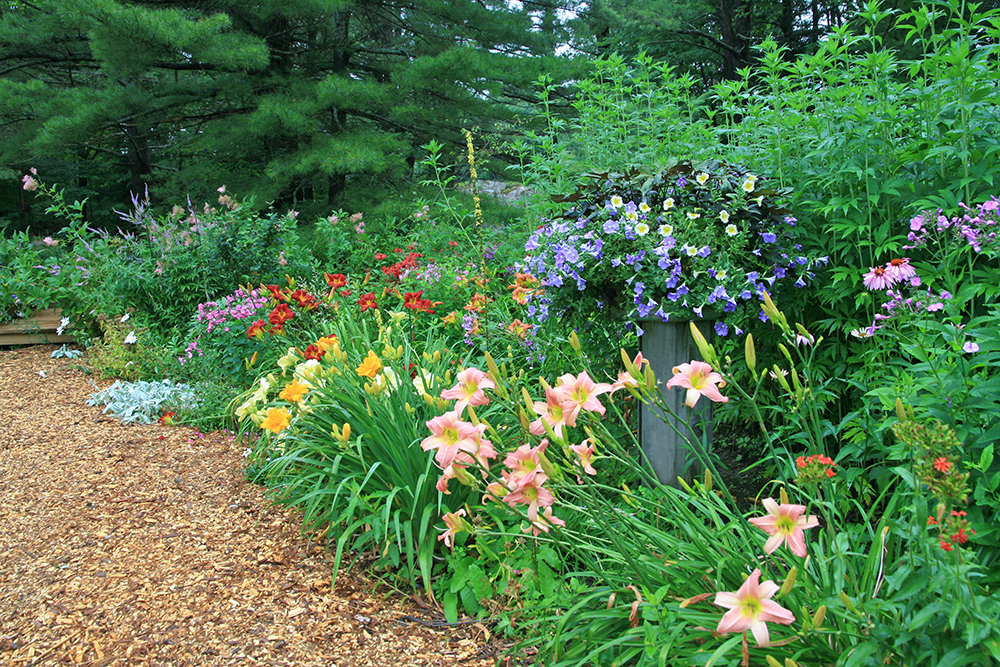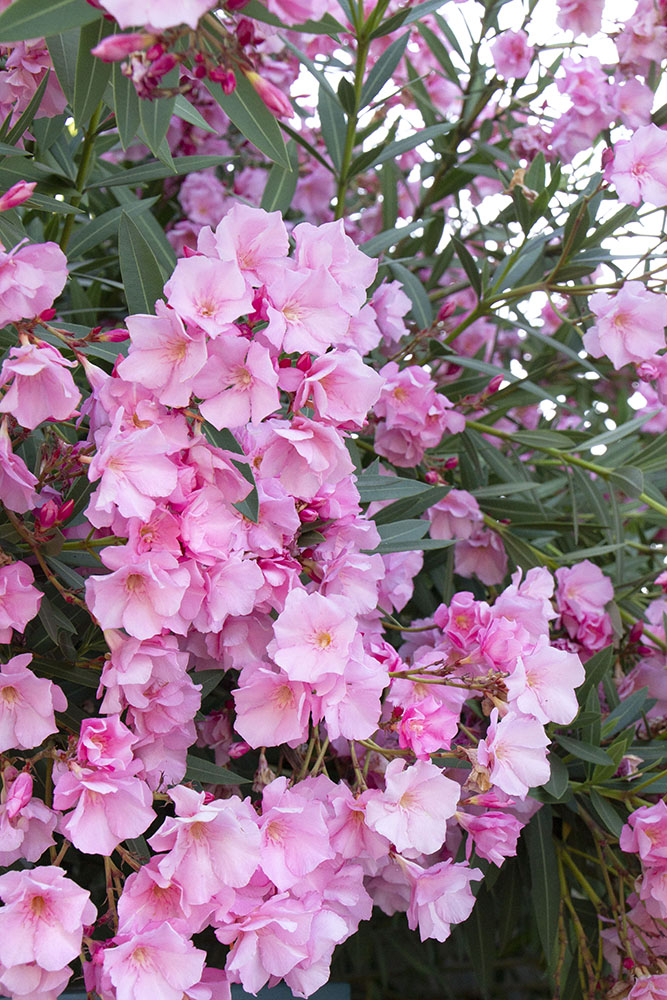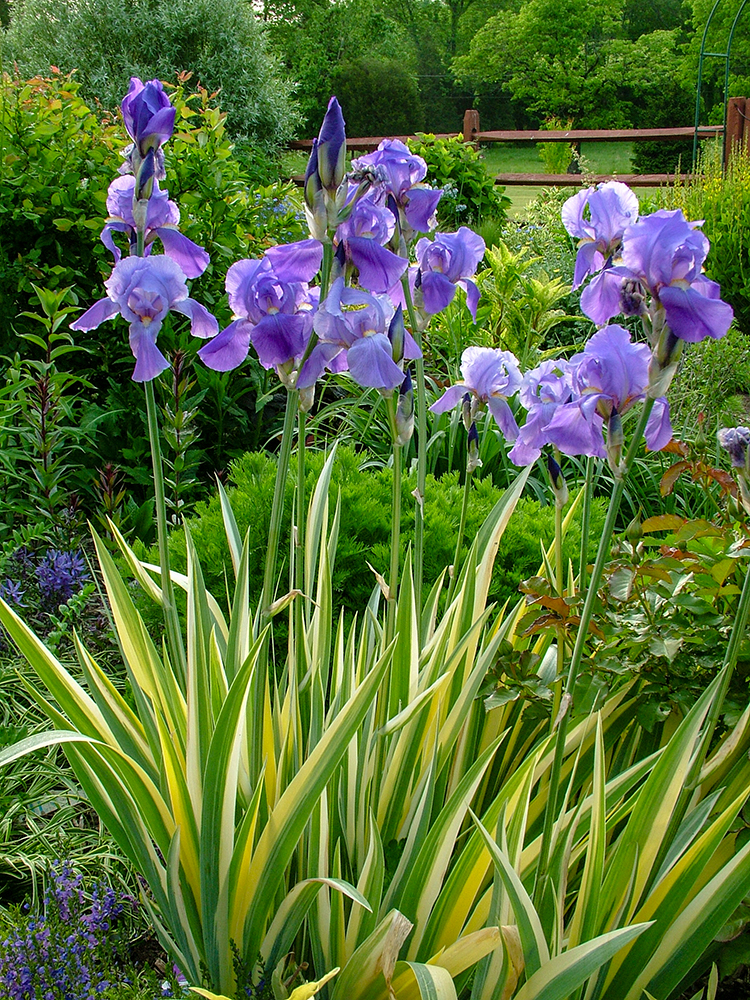The first steps to fragrant gardening
Fragrant flowers make a lovely, aromatic addition to any garden. If you are accustomed to growing primarily edible crops, though, there are a few considerations for fragrant gardening for your first foray into these beautiful blooms. The following is an excerpt from “Home Grown Gardening: Container and Fragrant Gardening” by Peter Loewer.

An introduction to fragrant gardening
In the late 1500s, Christopher Marlowe wrote the following lines for his poem “The Passionate Shepherd to His Love”: “And I will make thee beds of roses / And a thousand fragrant posies.”
In 1860, some 270 years later, Ralph Waldo Emerson opined in The Conduct of Life, “I wish that life should not be cheap, but sacred. I wish the days to be as centuries, loaded, fragrant.”
The first is a declaration of love, the second a philosophy of life. Both reflect on one of mankind’s five primary senses—the sense of smell.
Many idiomatic sayings are also associated with this sense, including a few that are not complimentary, for example, “It smells to high heaven”; “I am beginning to smell a rat”; and “They wrinkled their noses at the smell.” For every ill smell that’s recalled, however, there are dozens of proverbs, axioms, and, yes, even clichés linked to pleasant memories that usually involve flowers.
Trey Fromme, a young landscape architect lecturing at Longwood Gardens, once talked about the fragrant garden and said that we don’t often use “odor or fragrance as a focal point in the garden.” It’s time to do so in the garden world.
Types of soil
As you plan a fragrance garden, check your soil for its character: Is it solid clay, rich loam, or a combination of both? Is it well-drained or does the water stand in puddles even after a light rain?
Clay soils are sticky. If you roll a lump of wet backyard soil between your fingers and it forms a compact cylinder that refuses to break up, it’s clay. Clay isn’t all bad, as it contains valuable minerals that plants need for good growth. When dry, however, clay can be rock hard, and instead of percolating into that soil, rain or hose water simply rolls to the lowest level.
The opposite effect occurs with sandy soils: water is absorbed so quickly that the soil is often dry within hours of a heavy rain.
The best garden material is a good mix of soil and organic matter, much like that found in the woods, where leaves fall and rot over thousands of years. Plus, of course, good drainage. Of all the factors essential to good gardening, the most important is drainage.
There are many ways to improve your impoverished soil. You can add compost from your own compost pile; seasoned manure (fresh manure is usually too strong to plant in directly, so mix it in the soil thoroughly in late fall, winter, or very early spring, and wait a few months before direct planting); leaf-litter; or bags of composted manure, which can be found at garden centers.

Raised beds
If your soil is really bad and not worth the effort to improve, how about making a raised bed? Instead of digging down, mark out your area and build it up about 2 to 3 feet above the ground level using railroad ties from the lumber yard. If you are not sure whether the ties have been treated with creosote (newer ties generally are free of the chemical), be sure to ask, as it’s dangerous to people and pets. Alternatively, you can build a wall of concrete blocks, fieldstone, or even bricks. Then fill the new area with your own or purchased topsoil.
If you live on the side of a hill, you can do this to build terraces and prevent the rain from washing down the slopes.
A nursery bed
If your garden is expanding and you wish to try new plants, especially those grown from seed, plan for a small nursery bed in your garden. It need not be large, but it should be in a protected spot, have good soil, have access to water, and be out of the way so that you aren’t under pressure to consider aesthetics. Here you can raise seedling plants to maturity before planting them in the garden proper.
Watering the garden
The traditional rule of thumb is that gardens need 1 inch of water per week. Not many of us keep rain gauges in our gardens (although we should), and moisture needs change depending on weather conditions, soil type, plant type, and the surrounding environment. For example, there is more evaporation with high winds. Generally, if your garden gets a good soaking rain once a week, you’ll be able to forget about watering. But gardens in fast-draining sandy soils may need additional water, as may gardens in hot climates. Plants summering outdoors in pots will also need to be watered daily, or perhaps twice a day, depending on the size of the pot. Shallow- rooted plants must have more water than deep-rooted varieties, and new plants require constant moisture to help establish fledgling roots. The best way to tell when the garden needs water is to stick your finger in the soil. If it feels dry a couple of inches below the surface, it’s time to water.
Overhead sprinklers are the least efficient, especially in areas of high sun, high heat, and porous soil. Soaker hoses have tiny holes that release water slowly and are better than sprinklers. Drip irrigation systems are best
because they deliver water directly to the root zone. Kits are available that include the necessary hose attachments. Just attach the system to a water source, install a timer if you like, and you’re ready to go.
Mulch
Each year it’s more difficult to welcome the dog days of summer, because with every new July or August, the sun beats down with increased strength, baking the soil and evaporating water. A garden mulch will help to conserve water and also cut down on the growth of weeds. And a neatly applied layer of mulch often looks better between the plants than parched dirt.
A number of mulches are available around the country, including buckwheat hulls, chopped-up corn cobs, marble chips, pea gravel, pecan hulls, pine bark chips, pine needles, and for those in love with the smell of chocolate, cocoa husks. You can also use garden compost, hay, and
leaf mold (soft leaves like maple will mat, unlike the tough leaves of oaks). Never use peat moss; when completely dry it becomes a hardened mass that sheds water like a hot griddle scatters droplets.
In addition, some people use black plastic but if you do, be sure to cover it with a less offensive material.

Propping the plants
Some plants grow well with stout and sturdy stems; others become top-heavy with fragrant blooms and have a habit of bending over, particularly during those sudden thunderstorms of summer. So it becomes necessary to prop them up. Here are four methods.
Pea-staking, an English invention, involves placing branches pruned from trees upright in a perennial bed early in the season. The plants grow up through the sticks and cover them with foliage. The branches should be 6 inches shorter than the leaves of the plant. We use birch, wild cherry, and maple taken from our neighboring woodlands. The name originated in the vegetable garden, where this method was used to support pea vines.
Wire plant supports, which originated in Scotland, consist of heavy concentric wire rings wrapped around three metal legs. The plants grow up through the rings.
Bamboo or reed stakes can be used to support single-stemmed plants. I gather all the stems of my eulalia grasses (Miscanthus sinensis) in late fall and use them with twist-ties or plastic clips.
Cat’s-cradle is achieved by setting out four short corner stakes and winding green garden twine across and between.
A word about climate zones
The United States Department of Agriculture (USDA) Zone Map (see page 198) is based on average minimum temperatures found in various parts of the United States and Canada (the map refers only to a plant’s hardiness to cold weather, not to heat or other factors like drought or humidity). Even then, the zones are only guidelines. For a more accurate idea as to the highs and lows for your area, contact your county’s extension service.
Microclimates are also important. These are areas sheltered from the worst of the winter winds, areas that receive protection from the grace of being behind a small hill, places that enjoy extra warmth provided by heat leaking from a nearby warm building foundation, or a spot that gets extra sunlight even on a sunny day in winter. One of the marvelous adventures of gardening is experimenting with plant placement and succeeding with a rare plant where other gardeners have failed because they did not provide that extra measure of protection.
This, “An introduction to fragrant gardening,” is excerpted from Home Grown Gardening: Container and Fragrant Gardening by Peter Loewer. Used with permission of the publisher, Houghton Mifflin Harcourt.

This is a good introduction to gardening in general, but not so much on fragrant gardening. What are the most fragrant plants, or even most fragrant varieties of those? Roses can be fragrant for example, but some varieties were bred for size, resiliency, etc. and are not so fragrant. What pairs well together arromatically?